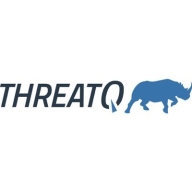

Tines and ThreatQ are products in the cybersecurity landscape, each offering unique attributes. Tines seems to have the upper hand in automation capabilities and deployment efficiency.
Features: Tines provides powerful automation abilities, allowing extensive customization through a no-code interface. It simplifies automation of repetitive tasks, enhancing operational efficiency. ThreatQ offers threat intelligence aggregation, analysis tools, and integration with existing security workflows, providing a comprehensive picture of threats.
Ease of Deployment and Customer Service: Tines has a cloud-based model known for quick setup and ease of use, supported by responsive customer service. ThreatQ offers flexible options including on-premises and cloud solutions, but with a more complex setup. It provides dedicated guidance throughout implementation and operation.
Pricing and ROI: ThreatQ generally presents a higher initial setup cost due to its comprehensive solution but yields significant ROI through enhanced intelligence operations. Tines offers competitive pricing, focusing on delivering high ROI through automation and efficiency improvements.
| Product | Market Share (%) |
|---|---|
| Tines | 7.3% |
| ThreatQ | 1.2% |
| Other | 91.5% |

ThreatQ is a cybersecurity platform designed to enhance threat intelligence operations. It centralizes and manages threat data, allowing organizations to identify and respond to threats more efficiently.
ThreatQ is designed to empower security teams by personalizing threat intelligence and automation processes. It integrates with existing technologies, streamlining data collection and distribution. This promotes efficient detection, investigation, and response to security incidents, improving overall cybersecurity posture and resilience.
What are the key features of ThreatQ?ThreatQ is versatile in industries like finance and healthcare, where cybersecurity is crucial. It facilitates swift threat identification and risk management, essential for protecting sensitive data and complying with industry regulations. Its adaptability allows it to fit into diverse security architectures, making it a valuable asset across sectors.
Tines offers no-code and low-code automation for users to automate tasks without coding expertise, integrating seamlessly with APIs to enhance incident management and security operations.
Known for a vendor-neutral approach, Tines provides detailed documentation and live chat support, allowing for effective integration with other tools, scheduling capabilities, and streamlined processes that save time and effort. Users find it intuitive for efficient task handling, making manual intervention unnecessary. Challenges include the need for more comprehensive documentation and instructional videos, as well as improvements in AI integration and reporting aesthetics. Pricing is also noted as higher compared to alternatives.
What are the most important features of Tines?Tines primarily serves organizations in the security sector, automating security operations such as alert detection and managed detection and response. It's utilized extensively in security operation centers for tasks like phishing email processing, ticket creation, IOC investigations, and ticket assignments within enterprise security frameworks, with multiple teams delivering Tines services to enhance task handling efficiency.
We monitor all Security Orchestration Automation and Response (SOAR) reviews to prevent fraudulent reviews and keep review quality high. We do not post reviews by company employees or direct competitors. We validate each review for authenticity via cross-reference with LinkedIn, and personal follow-up with the reviewer when necessary.